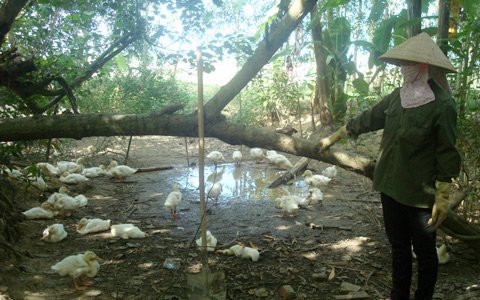Publish Date: Aug 24, 2012

- IA CEO Mariam Magala (L) shows a list of supplies to Dr. Lwamafa . PHOTO/Francis Emorut
By Francis Emorut
Ebola patients at Kagadi Hospital have been aided with health supplies critical for their recovery.
The health boost packages were handed over to the ministry of health in Kampala Thursday by Uganda Insurers Association.
“This is a very generous contribution. We need a lot of supplies to manage the patients in the knowledge that this is very contagious,” Dr. D.KW Lwamafa, the commissioner for health services national disease control said.
Lwamafa pointed out that the ministry is in dire need of catheters which have to be changed every so often because they fill up with urine.
The commissioner said the western district hospital is in dire need of gloves to handle the patients and the antiseptics to keep disinfecting the place.
The health supplies were handled over by the chief executive officer of Uganda Insurers Association, Miriam Magala.
The entire package which was worth sh10m includes catheter Foley, gloves, theatre caps, urine collecting bags, alcohol swabs, mackintosh rubber, Aprons, oxygen gas.
Others are potassium chloride and prednisolone tablets.
Magala said the donation is aimed at supporting the ongoing efforts by the ministry of health to contain the disease which so far has killed over 20 people since its outbreak last month in Kibaale district and to boost the recovery of the victims.
“The outbreak is almost under control. However, more people continue to be followed up, investigated and discharged after receiving treatment for other ailments,” Magala said.
Lwamafa observed that the oxygen gas will come in handy when patients go into respiratory failure.
Magala called upon all people of goodwill to contribute to this noble cause as some work still needs to be done especially in terms of psychological support for Ebola affected victims and communities.
http://www.newvision.co.ug/news/634461-ebola-patients-boosted-with-supplies.html
Ebola patients at Kagadi Hospital have been aided with health supplies critical for their recovery.
The health boost packages were handed over to the ministry of health in Kampala Thursday by Uganda Insurers Association.
“This is a very generous contribution. We need a lot of supplies to manage the patients in the knowledge that this is very contagious,” Dr. D.KW Lwamafa, the commissioner for health services national disease control said.
Lwamafa pointed out that the ministry is in dire need of catheters which have to be changed every so often because they fill up with urine.
The commissioner said the western district hospital is in dire need of gloves to handle the patients and the antiseptics to keep disinfecting the place.
The health supplies were handled over by the chief executive officer of Uganda Insurers Association, Miriam Magala.
The entire package which was worth sh10m includes catheter Foley, gloves, theatre caps, urine collecting bags, alcohol swabs, mackintosh rubber, Aprons, oxygen gas.
Others are potassium chloride and prednisolone tablets.
Magala said the donation is aimed at supporting the ongoing efforts by the ministry of health to contain the disease which so far has killed over 20 people since its outbreak last month in Kibaale district and to boost the recovery of the victims.
“The outbreak is almost under control. However, more people continue to be followed up, investigated and discharged after receiving treatment for other ailments,” Magala said.
Lwamafa observed that the oxygen gas will come in handy when patients go into respiratory failure.
Magala called upon all people of goodwill to contribute to this noble cause as some work still needs to be done especially in terms of psychological support for Ebola affected victims and communities.
http://www.newvision.co.ug/news/634461-ebola-patients-boosted-with-supplies.html









